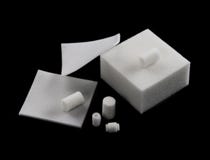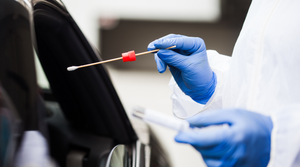Why the Micro Still Matters for Materials
May 23, 2014
Nanotechnology receives a great deal of attention in the medical device field, with its potential to create highly biocompatible materials, super tiny devices and genetically altered cells. But it is worth noting that plenty of advances are still taking place at the micro level.
|
The Biomerix 3D Scaffold, as shown on the company's website, consists of an interconnected, three-dimensional, network of cells and pores. |
Look no further than Fremont, CA-based Biomerix Corp. and its porous polyurethane materials. Years of effort and research went into producing biostable, polyurethane scaffolds at the micro level.
Biomerix now uses such scaffolds in FDA-approved hernia meshes, tendon augmentation devices implanted in orthopedic procedures, and vascular occlusion devices--and is working with partners on various vascular applications involving biostables, says Arindam Datta, a distinguished materials fellow working out of the company's Somerset, NJ office.
The company is also presently engaged in animal studies related to bioabsorbable scaffolds it developed in recent years. Such biodegradable scaffolds could be used for cartilage repair; plugging holes from natural orifice translumenal endoscopic (NOTES) surgery; and delivery of useful drugs or biologics to internal tissues.
Datta acknowledges that the challenge that had to be overcome involved taking a stiff form of polyurethane and turning it into something that would be elastomeric--able to hold up its properties while squished inside a endoscopic surgical device, expanded to fit wherever it needed to go, or stretched or squished inside a moving human body.
It needed to demonstrate resilient recovery after being deformed under both compression and tension.
Others had achieved porous polyurethane at the micro level through processes such as salt leaching in which the polymer was submersed in solutions. Biomerix instead relied on a proprietary two-step process that involved years of fine-tuning--and which Datta claims is much faster than the other methods.
First, Biomerix creates a polyurethane foam. The soft part of the foam is then removed using a controlled, high-temperature, hydrogen-oxygen burn that turns the porous foam into an open cell matrix. Depending on how the process is tweaked, the cells can be 250 to 750 microns in diameter, while the pores inside the cells are about half the size.
"We basically blast or melt the membranes out. ... That's how we achieve the interconnectivity. --- We were the first to make polycarbonate foam, and then open it up," Datta says.
|
This chart, courtesy of Biomerix, shows the difference at the micro level between the Biomerix scaffold and other types of materials. |
Here's what Datta and the company say the scaffolds are made of:
"The biostable reticulated cross-linked polycarbonate polyurethane-urea scaffold is made by polymerizing polycarbonate polyol soft segment with aromatic isocyanate hard segment; it is simultaneously accompanied by chemical cross-linking and in situ foaming triggered by [carbon dioxide] formation produced from a second reaction between isocyanate and water resulting in a porous foam. ... For the biodegradable reticulated cross-linked polyester polyurethane-urea scaffold, the degradable soft segments are derived from polyols of polycaprolactone and its copolymers with other polyesters such as polylactic acid and polyglycolic acid while maintaining the same aromatic isocyanate hard segment. The degradation profiles of biodegradable scaffolds are controlled by a unique combination of polyol compositions and degree of cross-linking."
See Datta discuss Biomerix's technology at MD&M East, June 9-12, 2014 in New York City. |
Biomerix's efforts show just how challenging it can be to create useful medical device materials at the micro level--let alone the nano level. Datta suspects that it might be worth it to get to the nano level when it comes to repairing complex organs such as the liver. But for other forms of tissue repair, micro-level engineering might be more than enough to prod the human body into repairing itself.
"It's very difficult to create exactly what the body does. It's very complicated. If you're trying to do at the nano level with regenerative medicine what we're trying to do, it's overkill," Datta says.
Chris Newmarker is senior editor of MPMN and Qmed. Follow him on Twitter at @newmarker.
About the Author(s)
You May Also Like




